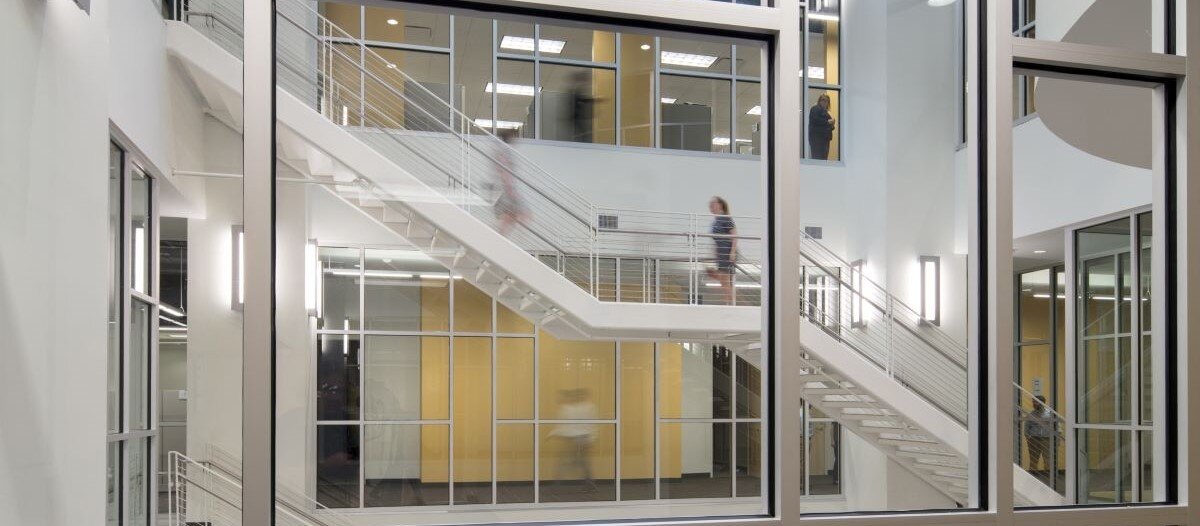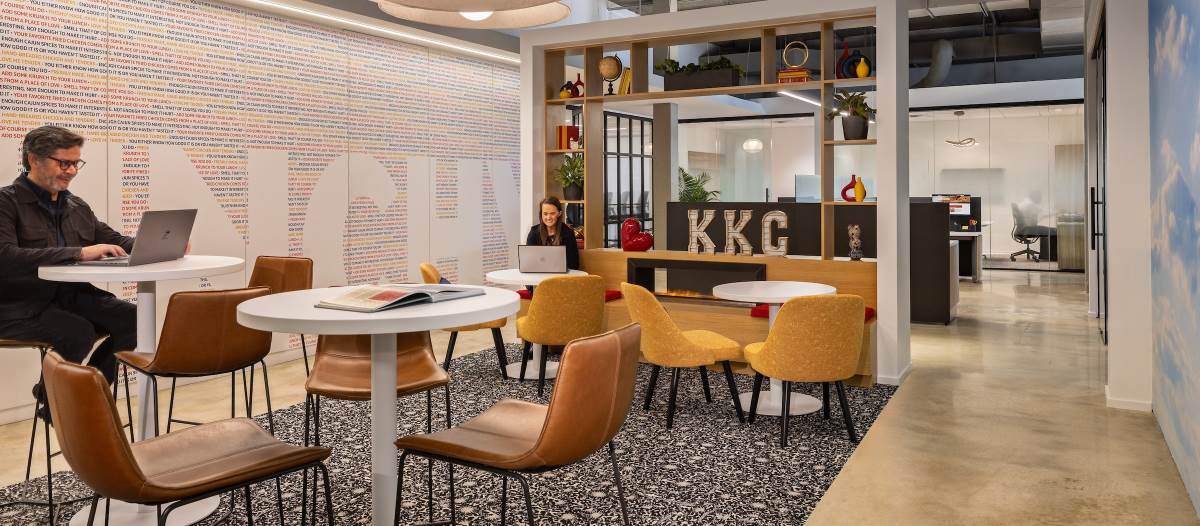What is a Healthy Workplace?
FM’s role in people’s well-being

For decades, health was simply defined as “the state of being free from illness or injury.” Over the years, it has evolved into much more than that. According to the World Health Organization, health is "a state of complete physical, mental and social well-being and not merely the absence of disease and infirmity.” Health not only applies to people but to buildings as well. The buildings human beings inhabit can have a direct effect on their health. Those buildings can promote or deter good health. This is clearly evident in the workplace.
Based on an average 40-hour work week, 50 weeks per year, workers spend approximately 23 percent of their lifetime at work. Because people spend so much time in workplace environments, those spaces play a critical role in their psychological and physical well-being. According to the Centers for Disease Control and Prevention, well-being is the ability of individuals to address normal stresses, work productively and realize one’s highest potential. It is widely believed that healthy employees are more likely to perform optimally. So how can the workplace play a role in health? That is an important question to ask. The answer is resounding. The buildings in which people work can greatly impact the health of the individuals.
WELL Building Institute is a global organization that focuses on promoting healthy environments for people to live, work and play. In 2014, the WELL Building Standard was created to improve the way people live by developing spaces that enhance occupant health and quality of life. Similar to how LEED (Leadership in Energy & Environmental Design) focuses on the environmental impact and sustainability of buildings, the WELL Building Standard focuses on the health and wellness of the inhabitants of the buildings. As a result, the WELL certification has become a respected standard for building owners and facility managers who want to ensure the health and well-being of their occupants
WELL-certified buildings can lead to improved productivity, reduced absenteeism, and increased satisfaction and happiness among occupants. According to the WELL Building Institute, WELL is a performance-based system for measuring, certifying, and monitoring features of the built environment that impact human health and well-being, through 10 core concepts relevant to health: air, water, nourishment, light, movement, thermal comfort, sound, materials, mind and community.
![]()
Intent: The Air concept aims to achieve high levels of indoor air quality across a building’s lifetime through diverse strategies that include source elimination or reduction, active and passive building design and operation strategies and human behavior interventions.
Precondition Features:
- Air quality
- Smoke-free environment
- Ventilation design
- Construction pollution management
Optimizations:
- Enhanced air quality
- Enhanced ventilation design
- Operable windows
- Air quality monitoring and awareness
- Pollution infiltration management
- Combustion minimization
- Source separation
- Air filtration
- Enhanced supply air
- Microbe and mold control
![]()
Intent: The Water concept covers aspects of the quality, distribution and control of liquid water in a building. It includes features that address the availability and contaminant thresholds of drinking water and targeting water management to avoid damage to building materials and environmental conditions.
Precondition Features:
- Water quality indicators
- Drinking water quality
- Basic water management
Optimizations:
- Enhanced water quality
- Drinking water quality management
- Drinking water promotion
- Moisture management
- Hygiene support
![]()
Intent: The Nourishment concept requires the availability of fruits and vegetables and nutritional transparency. It encourages the creation of food environments, where the healthiest choice is the easiest choice.
Precondition Features:
- Fruits and vegetables
- Nutritional transparency
Optimizations:
- Refined ingredients
- Food advertising
- Artificial ingredients
- Portion sizes
- Nutrition education
- Mindful eating
- Special diets
- Food preparation
- Responsible food sourcing
- Food production
- Local food environment
![]()
Intent: The Light concept promotes exposure to light and aims to create lighting environments that promote visual, mental and biological health.
Precondition Features:
- Light exposure
- Visual lighting design
Optimizations:
- Circadian lighting design
- Electric light glare control
- Daylight design strategies
- Daylight simulation
- Visual balance
- Electric light quality
- Occupant lighting control
![]()
Intent: The Movement concept promotes physical activity in everyday life through environmental design, policies and programs to ensure that movement opportunities are integrated into the fabric of culture, buildings and communities.
Precondition Features:
- Active buildings and communities
- Ergonomic workstation design
Optimizations:
- Circulation network
- Facilities for active occupants
- Site planning and selection
- Physical activity opportunities
- Active furnishings
- Physical activity spaces and equipment
- Physical activity promotion
- Self-monitoring
![]()
Intent: The Thermal Comfort concept aims to promote human productivity and provide a maximum level of thermal comfort among all building users through improved HVAC system design and control and by meeting individual thermal preferences.
Precondition Features:
- Thermal performance
Optimizations:
- Verified thermal comfort
- Thermal zoning
- Individual thermal comfort
- Radiant thermal comfort
- Thermal comfort monitoring
- Humidity control
![]()
Intent: The Sound concept aims to bolster occupant health and well-being through the identification and mitigation of acoustical comfort parameters that shape occupant experiences in the built environment.
Precondition Features:
- Sound mapping
Optimizations:
- Maximum noise levels
- Sound barriers
- Reverberation time
- Sound reducing surfaces
- Minimum background sound
![]()
Intent: The Materials concept aims to reduce human exposure, whether direct or through environmental contamination, to chemicals that may impact health during the construction, remodeling, furnishing and operation of buildings.
Precondition Features:
- Material restrictions
- Interior hazardous materials management
- CCA and lead management
Optimizations:
- Site remediation
- Enhanced material restrictions
- VOC restrictions
- Materials transparency
- Materials optimization
- Waste management
- Pest management and pesticide use
- Cleaning products and protocols
![]()
Intent: The Mind concept promotes mental health through policy, program and design strategies that seek to address the diverse factors that influence cognitive and emotional well-being.
Precondition Features:
- Mental health promotion
- Nature and place
Optimizations:
- Mental health services
- Mental health education
- Stress management
- Restorative opportunities
- Restorative spaces
- Restorative programming
- Enhanced access to nature
- Tobacco cessation
- Substance use services
![]()
Intent: The Community concept aims to support access to essential healthcare, build a culture of health that accommodates diverse population needs and establish an inclusive, engaged occupant community.
Precondition Features:
- Health and well-being promotion
- Integrative design
- Emergency preparedness
- Occupant survey
Optimizations:
- Enhanced occupant survey
- Health services and benefits
- Enhanced health and well-being promotion
- New parent support
- New mother support
- Family support
- Civic engagement
- Diversity and inclusion
- Accessibility and universal design
- Emergency resources
Creating a healthy workplace environment is not just about improving the physical health of employees, but also their mental and social well-being. The WELL concepts illustrate how workplaces can create an environment that enhances employee health, well-being, and performance.
The WELL concepts provide a roadmap for businesses to create healthy workplaces that benefit their employees, visitors, and the environment. By understanding and implementing these concepts, businesses can improve the health, well-being, and performance of their employees, ultimately leading to a more productive and successful business. Creating a healthy workplace environment can lead to complete physical, mental, and social well-being...a healthy workplace indeed.

Read more on Occupancy & Human Factors , Risk Management and Workplace
Explore All FMJ Topics









